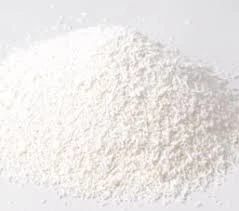
so2 as food preservative
The Role of Sulfur Dioxide as a Food Preservative
Sulfur dioxide (SO2) has been utilized for centuries as a food preservative, renowned for its ability to enhance the shelf life and maintain the quality of various food products. This colorless gas, characterized by its pungent and suffocating odor, is produced during the burning of sulfur or sulfide minerals and is widely accepted in the food industry due to its antioxidant and antimicrobial properties. Despite concerns regarding its health effects, SO2 continues to play a crucial role in food preservation, particularly in dried fruits, wines, and some canned goods.
Mechanism of Preservation
Sulfur dioxide functions primarily as an antioxidant and antimicrobial agent. It inhibits enzymatic browning reactions in fruits and vegetables, which can otherwise lead to undesirable color changes and flavor loss. By preventing oxidation, SO2 helps preserve the natural color, taste, and nutritional value of food products. Additionally, its antimicrobial properties combat the growth of spoilage-causing microorganisms such as bacteria, yeasts, and molds, thus extending the shelf life of food items.
In dried fruits, for instance, SO2 is commonly used to maintain vibrant colors, especially in apricots, raisins, and prunes. These fruits, when exposed to air, tend to brown and lose their appeal. The addition of sulfur dioxide effectively curtails these reactions, allowing producers to market visually appealing products to consumers.
Applications in Food and Beverages
SO2 is widely employed in various food products beyond dried fruits. One of its most significant applications is in the wine industry. Sulfur dioxide is used to sanitize equipment, inhibit unwanted microbial activity, and prevent oxidation during the fermentation process and storage. Most wines contain added SO2, which not only helps in preserving the wine but also enhances its flavor profile.
so2 as food preservative

However, the amount of SO2 allowed in food products is regulated by various food safety authorities worldwide, including the FDA in the United States and the European Food Safety Authority in Europe. These regulations ensure that the levels used are safe for consumption, balancing the need for preservation with potential health risks.
Health Considerations
While sulfur dioxide is effective in preserving food, there are health concerns associated with its use. Some individuals are sensitive to sulfites, which can lead to allergic reactions, including respiratory issues and skin irritations. The prevalence of these sensitivities has prompted increased regulations regarding labeling on food products that contain sulfites. In the European Union and the United States, for example, products containing more than 10 parts per million of sulfur dioxide must be clearly labeled.
Despite its potential drawbacks, when used within regulatory limits, SO2 is considered safe for most individuals. Ongoing research continues to explore the efficacy and safety of sulfur dioxide as a preservative, ensuring that food safety remains paramount.
Conclusion
In conclusion, sulfur dioxide serves as a vital food preservative, leveraging its antioxidant and antimicrobial properties to enhance the quality and longevity of various food products. Its applications in dried fruits and wines are particularly noteworthy, contributing to the visual and taste appeal of these items. While awareness of the health concerns associated with sulfite sensitivities is essential, regulatory bodies have established guidelines to ensure safe consumption levels. As the food industry continues to evolve, sulfur dioxide's role in food preservation remains significant, balancing safety, quality, and consumer demand in the ever-changing landscape of food production.
-
The Safety Challenges of Ammonium Nitrate FertilizerNewsJun.26,2025
-
The Critical Role of Mining ChemicalsNewsJun.26,2025
-
Shelf Life of Glacial Acetic Acid Food GradeNewsJun.26,2025
-
Enhancing PVC Longevity with 1,2,3-Benzotriazole InnovationsNewsJun.26,2025
-
China’s Dominance in Food Additive ProductionNewsJun.26,2025
-
Can Aluminum Hydroxide Replace More Toxic Alternatives?NewsJun.26,2025
-
PE and PP Plastics with Benzotriazole AdditivesNewsJun.12,2025
Hebei Tenger Chemical Technology Co., Ltd. focuses on the chemical industry and is committed to the export service of chemical raw materials.
-

view more DiethanolisopropanolamineIn the ever-growing field of chemical solutions, diethanolisopropanolamine (DEIPA) stands out as a versatile and important compound. Due to its unique chemical structure and properties, DEIPA is of interest to various industries including construction, personal care, and agriculture. -

view more TriisopropanolamineTriisopropanolamine (TIPA) alkanol amine substance, is a kind of alcohol amine compound with amino and alcohol hydroxyl, and because of its molecules contains both amino and hydroxyl. -

view more Tetramethyl Thiuram DisulfideTetramethyl thiuram disulfide, also known as TMTD, is a white to light-yellow powder with a distinct sulfur-like odor. It is soluble in organic solvents such as benzene, acetone, and ethyl acetate, making it highly versatile for use in different formulations. TMTD is known for its excellent vulcanization acceleration properties, which makes it a key ingredient in the production of rubber products. Additionally, it acts as an effective fungicide and bactericide, making it valuable in agricultural applications. Its high purity and stability ensure consistent performance, making it a preferred choice for manufacturers across various industries.











